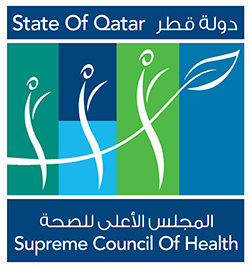The medical team of doctors at GlobeMed, the leading healthcare benefits management company in the Middle East, has conducted a literature review on the effects of Endocrine Disrupting Chemicals (EDC) and their interference with the body hormones. The review was supervised by Dr. Elia Abdul Massih, Goodcare Clinics Director, and led by Dr. Karen Abou Jaoude, Population Health Specialist. It demonstrated that even at low levels of exposure, EDCs can induce adverse health effects, contributing significantly to the development of diseases such as cancers, asthma, diabetes, genital defects and obesity. Furthermore, the literature review established six easy ways to decrease exposure to these harmful chemicals.
What are Endocrine Disrupting Chemicals (EDSs)?
EDCs are exogenous chemicals or mixtures that can interfere with hormone actions in our bodies in a negative way. Hormones are messengers released from endocrine glands in the body and bind to specific receptors on their target organs to result in a precise, oftentimes required action for our healthy survival before being reabsorbed or eliminated once their effect has occurred. Examples of suspected EDCs include: metals, industrial chemicals, personal care products, pesticides, natural estrogen and progesterone, plastic, hormonally active drugs and synthetic hormones.
We are exposed daily to low doses of EDCs without even suspecting or realizing it such as:
• Perchlorate
• Parapenes
• Perfluoroalkyl substances (PFAS)
• Benzophenone
Even at low levels of exposure, EDCs can induce adverse health effects. Human and animal studies have shown causal relationships between EDCs and several diseases, and have identified the mechanisms by which these chemicals cause harm. Studies also demonstrated how EDCs contribute significantly to the development of cancers, asthma, diabetes, genital defects and obesity.
The Endocrine System and how EDCs interfere
The endocrine system and its hormones coordinate the tissues and organs of the body. Examples of such control include but are not limited to the following:
a. Estrogen and progesterone, which are important in female fertility.
b. Insulin, a key component of blood sugar regulation whose deficiency or low activity causes diabetes mellitus disease.
c. Thyroid hormones, which are released from the thyroid gland and are responsible for regulating various metabolic and growth functions.
Hormones of the endocrine system are important at all stages of life from conception until death. At conception, hormones are not only needed for the mother during pregnancy but also play an essential role in the development of the fetus in utero and later after birth throughout early life.
An important point to note is that hormones act at low doses. Any disruption of this balance, no matter how small, will have drastic effects on the functioning of organs and tissues. In addition, hormones need specific target receptors to illicit a response.
Since the relationship between hormone and effect is not linear, having too much or too little of a hormone is equally harmful. For instance, having too little or too much of testosterone in the body increases the risk of having prostate cancer equally.
EDCs can induce harmful effects by either changing the amount of hormones available or interfering with their corresponding receptors. They can then either mimic the hormonal response and thus multiply the effect or induce an opposing effect hence blocking or changing the intended action.
Why care?
The prevalence of many endocrine diseases such as diabetes and obesity is increasing and the burden rests upon us. For diseases to occur there is always an interplay of genetic and environmental factors. If we cannot choose or change our genes, at least not at this stage, then why not try and control our environment by limiting exposure to such chemicals as much as possible?
What can we do?
There are six simple steps that can reduce EDC exposure:
1. Eat Organic and Reduce Pesticides
The more you eat organic foods the less likely you are to ingest the chemicals found in pesticides. This does not mean that you have to be extremely strict and eat only organic. Not every fruit or vegetable you eat has to be purely organic. For instance, ones containing the highest doses are those directly sprayed with pesticides and eaten whole such as leafy greens and vegetables. It is recommended that you start your organic journey with “The Dirty Dozens” that harbor the most pesticides including bell peppers, spinach, nectarines, grapes, peaches, pears, celery, lettuce, potatoes, cherries, strawberries and apples.
2. Avoid canned and processed food
Cans contain an array of bisphenols that act similarly to estrogen and oppose the hormone adiponectin, thus increasing the size of fat cells and contributing to doubling the risk of diabetes. Cans containing “BPA-free” labels are not safe either as they contain a large number of bisphenols
3. Avoid thermal paper receipts
The receipts from cash registers and credit/debit machines contain the chemical BPA, which can be easily absorbed through your skin. Some companies have banned its usage in several of their products such as water bottles and food containers, but you can still find it in thermal paper receipts. It has been linked to an increase in breast and prostate cancers, cardiovascular disease and reproductive and brain development abnormalities.
Thermal paper discolors easily when scratched with a coin or paperclip. Try not to accept receipts and go paperless instead, but if you must handle them, hold it from the non-glossy backside. Beware when storing the receipts as the BPA rubs off easily on everything such as your pocket, wallet or purse. After handling the receipt, wash your hands with soap and water within 4 minutes, after which it would be too late. If your job requires your ongoing handling of receipts, wear latex gloves. Lastly, do not use a hand sanitizer after touching a possible thermal receipt. Research has shown the BPA level went up by 185% after using skin products such as sunscreens, moisturizer and sanitizers.
4. Beware of plastics
Plastics contain phthalates and parabens, which have various effects.
5. Create a healthy home
Flame-retardants and other organic pollutants found in electronic devices and furniture accumulate in your household as dust, and can interfere with the normal functioning of the thyroid gland. As such, easy and efficient ways to decrease exposure to such chemicals are by opening the windows regularly to filter the air in the house, vacuuming at least once per week and mopping the house with a wet mop.
6. Avoid non-sticking cooking pans
These types of pans contain a substance called perfluoroalkyl, best known as PFAS. They interfere with metabolism and have shown to induce rebound weight gain after a successful diet. An alternative would be to use cast iron or stainless steel cookware.
Takeaway message
Endocrine disrupting chemicals are all around us. They have drastic effects on our health and contribute significantly to the development of several non-communicable diseases. Taking control of our health and limiting our everyday exposure to such chemicals has been made easier by those six simple steps. It is never too late to take the reins in looking after our health.
The study is done based on the below references:
- Lee, Duk-Hee. "Evidence of the possible harm of endocrine-disrupting chemicals in humans: ongoing debates and key issues." Endocrinology and Metabolism 33.1 (2018): 44-52.
- Lee, Duk-Hee, et al. "Chlorinated persistent organic pollutants, obesity, and type 2 diabetes." Endocrine reviews 35.4 (2014): 557-601.
- Taylor, Kyla W., et al. "Evaluation of the association between persistent organic pollutants (POPs) and diabetes in epidemiological studies: a national toxicology program workshop review." Environmental health perspectives 121.7 (2013): 774-783.
- Kusminski, Christine M., et al. "MitoNEET-driven alterations in adipocyte mitochondrial activity reveal a crucial adaptive process that preserves insulin sensitivity in obesity." Nature medicine 18.10 (2012): 1539.
- Curtis, Sandra. “Is BPA on Thermal Paper A Health Risk?” Plastic Pollution Coalition, Plastic Pollution Coalition, 23 Dec. 2016, www.plasticpollutioncoalition.org/blog/2016/12/23/is-bpa-on-thermal-pape....
- Vandenberg, Laura, et al. “Let's Talk EDCs.” Endocrine Society, Endocrine Society, 2019, www.endocrine.org/topics/edc/talking-edcs.
- Trasande, Leonardo. “Avoiding Endocrine-Disrupting Chemicals: 5 Tips.” Medscape, Medscape, 7 Feb. 2020, www.medscape.com/viewarticle/924846.
This study is a general guideline intended for informational purposes only and does not provide medical advice. It is prepared based on information and data available in the references above. GlobeMed neither undertakes nor guarantees that such information is complete and error-free. GlobeMed will not be liable for any direct, indirect, consequential, special, exemplary, or other damages arising therefrom.


















